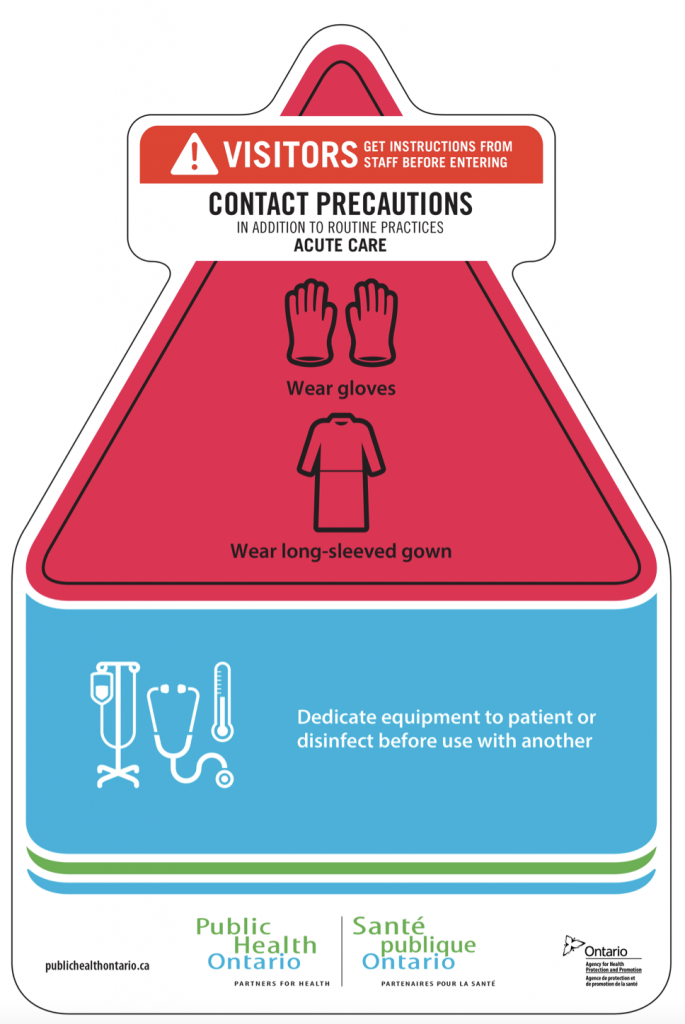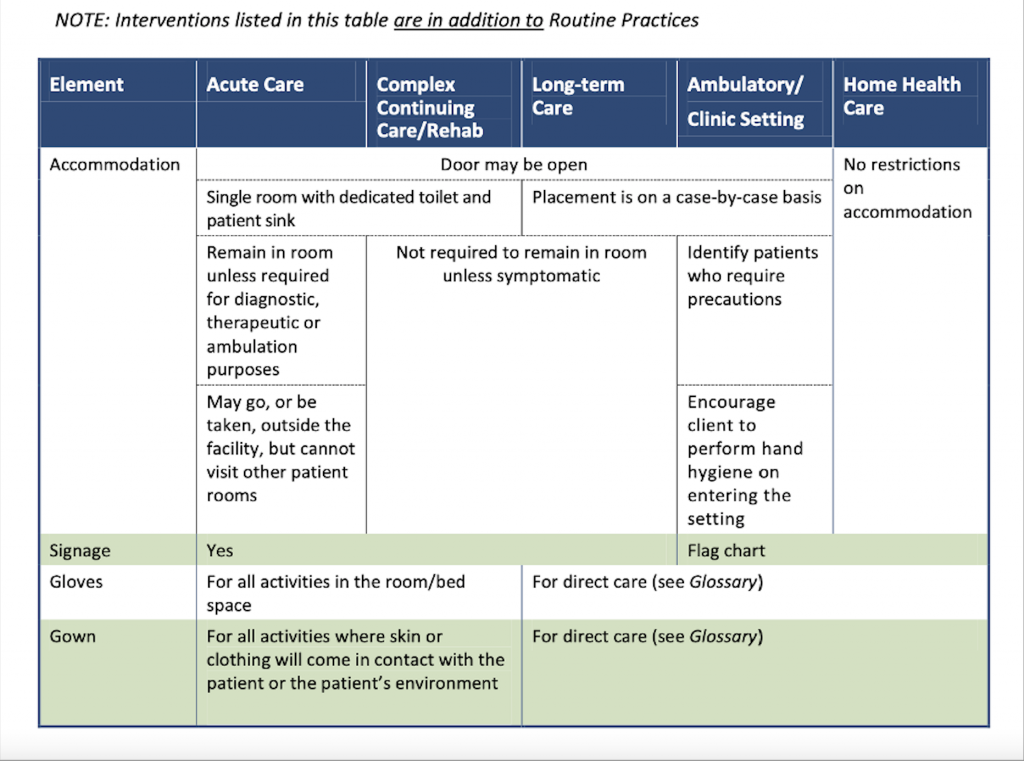Contact Precautions
Contact precautions are the most common type of additional precautions. Contact precautions are used in addition to routine practice for clients known or suspected to be infected with microorganisms that can be transferred by direct or indirect contact.
Direct contact occurs through touching a client. For example, when touching a client while assisting them with elimination or getting out of bed. Indirect contact occurs when touching a contaminated object or surface. For example, when auscultating a client’s chest, the stethoscope directly touches the client and becomes contaminated. Subsequently, when the stethoscope touches you or another client, the microorganism is indirectly transmitted to another person.
Types of microorganisms in the contact category include antibiotic-resistant organisms (AROs) such as methicillin-resistant Staphylococcus aureus (MRSA), vancomycin-resistant Enterococci (VRE), extended spectrum beta-lactamase (ESBL), C. difficile, carbapenemase-producing organisms (CPO), agents of infectious diarrheas, and scabies. AROs are also known as multidrug-resistant organisms (MDROs).
Risk assessment for contact microorganisms includes:
- Hand hygiene: before, during, and after care as needed.
- Wear gloves and a gown when providing direct care.
- Follow routine practices for all care.
- The client should be in a private room if possible, and the door can remain open. If a private room is not possible, use a cohort room with clients with the same diagnosis. If in a cohort room, ensure each client has dedicated equipment and that the equipment is cleaned between use.
- Clean the area daily and more frequently in high-touch areas. Special cleaning is required for VRE- and C. difficile diagnosed clients.
- Is the proper contact=additional precaution sign on the door?

To prevent the transmission of contact precaution microorganisms, it is important to follow routine practices and the additional precautions outlined in the following tables by Public Health Ontario (PIDAC, 2012):


Test your Knowledge
Attribution
This page was remixed with our own original content and adapted from:
Clinical Procedures for Safer Patient Care — Thompson Rivers University Edition by Renée Anderson, Glynda Rees Doyle, and Jodie Anita McCutcheon is used under a CC BY 4.0 Licence. This book is an adaptation of Clinical Procedures of Safer Patient Care by Glynda Rees Doyle and Jodie Anita McCutcheon, which is under a CC BY 4.0 Licence. A full list of changes and additions made by Renée Anderson can be found in the About the Book section.

